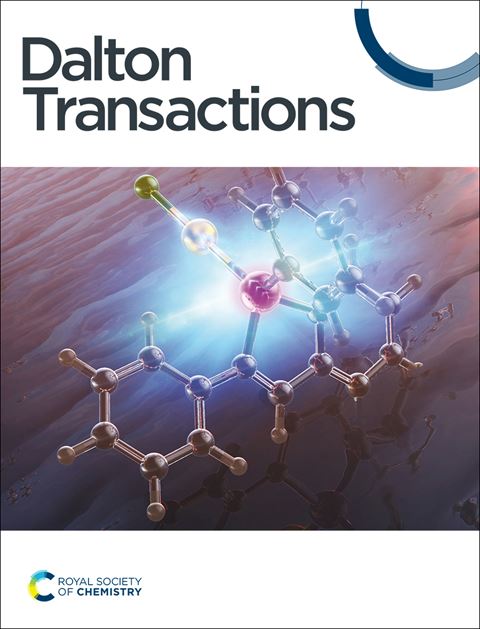酶的作用机理:第二NH3的形成、释放和循环的完成
IF 3.5
3区 化学
Q2 CHEMISTRY, INORGANIC & NUCLEAR
引用次数: 0
摘要
酶氮酶催化反应为N2 + 8e - + 8H+ = 2NH3 + H2。本系列之前的两篇论文报道了这种催化的第一阶段和第二阶段的计算机制。在第一阶段H2形成,H2/N2交换发生,N2在形成结合的HNHH中间体的协调步骤中被捕获。第二相破坏N-N键,将中间产物转化为结合的NH3和第一个NH3, NH3解离。第三篇论文描述的是最后阶段,形成并释放第二NH3,恢复静息状态。该机制得到了483+原子量子模型的密度泛函计算的支持,该模型包括活性位点、FeMo-co以及相关的周围氨基酸和水。经过计算的反应轨迹和势能分布得出了反应中NH3形成阶段的五条机理路径。这些途径通过纳入熵分量和H原子隧穿可能的动力学贡献来评估,从而确定了生成NH3及其随后解离的最有利途径。描述了恢复静息状态和完成机构循环的步骤。该机制的第三阶段和最后阶段的所有步骤在热力学和动力学上都是可行的。FeMo-co的原子S2B在酶转换过程中的保留在实验上存在争议,但它作为Fe2和Fe6之间的桥梁保持完整,并且在该机制中是必不可少的H转移剂。概述了活性位点及其周围的结构,这些结构促进了氮酶在其性能空间中的化学编排,并总结了所提出的完整机制的关键特征和原则。本文章由计算机程序翻译,如有差异,请以英文原文为准。
The Mechanism of Nitrogenase: formation and release of the second NH3 and completion of the cycle
The enzyme nitrogenase catalyses the reaction N2 + 8e– + 8H+ = 2NH3 + H2. Two prior papers in this series report a computed mechanism for the first and second phases of this catalysis. In the first phase H2 is formed, the H2/N2 exchange occurs, N2 is captured in a concerted step forming the bound HNHH intermediate. The second phase breaks the N-N bond and converts this intermediate to bound NH plus the first NH3, which dissociates. This third paper describes the final phase, which forms and then releases the second NH3, and recovers the resting state. The mechanism is supported by density functional calculations with a 483+ atom quantum model of the active site, FeMo-co, and relevant surrounding amino acids and water. Calculated reaction trajectories and potential energy profiles generate five mechanistic pathways through this NH3 formation phase of the reaction. These pathways are evaluated with incorporation of entropic components and possible kinetic contributions by H atom tunneling, leading to the identification of the most favourable pathway for generation of NH3 and its subsequent dissociation. The steps regenerating the resting state and completing the mechanism cycle are described. All steps in this third and final phase of the mechanism are thermodynamically and kinetically feasible. Atom S2B of FeMo-co, whose retention during enzyme turnover is experimentally controversial, remains intact as a bridge between Fe2 and Fe6 and is an essential H transfer agent in the proposed mechanism. The architecture of the active site and its surrounds that promote the chemical choreography of nitrogenase in its performance space are outlined, and key features and principles of the proposed complete mechanism are summarised.
求助全文
通过发布文献求助,成功后即可免费获取论文全文。
去求助
来源期刊

Dalton Transactions
化学-无机化学与核化学
CiteScore
6.60
自引率
7.50%
发文量
1832
审稿时长
1.5 months
期刊介绍:
Dalton Transactions is a journal for all areas of inorganic chemistry, which encompasses the organometallic, bioinorganic and materials chemistry of the elements, with applications including synthesis, catalysis, energy conversion/storage, electrical devices and medicine. Dalton Transactions welcomes high-quality, original submissions in all of these areas and more, where the advancement of knowledge in inorganic chemistry is significant.
 求助内容:
求助内容: 应助结果提醒方式:
应助结果提醒方式:


